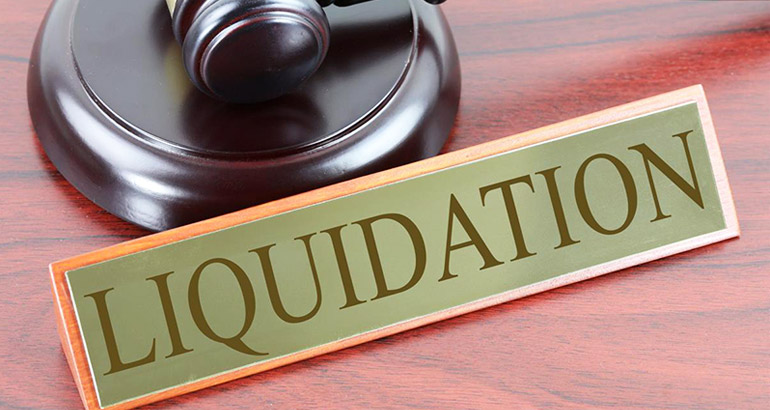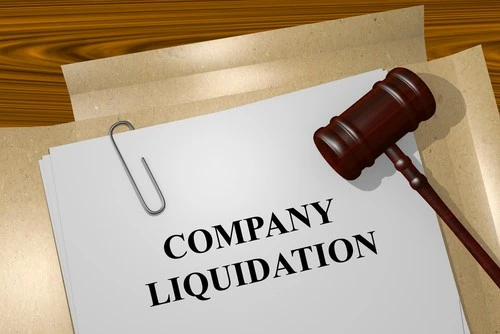The Buzz on Company Liquidation
Table of ContentsSome Known Factual Statements About Company Liquidation Little Known Questions About Company Liquidation.Some Known Details About Company Liquidation The Best Guide To Company LiquidationFacts About Company Liquidation Uncovered
An MVL is the easiest. Directors and shareholders come to an agreement, and the business is sold and sold off. No court orders are included and revenues are split between investors once any last repayments to financial institutions have actually been made. Financial institutions' volunteer liquidation (CVL) is a wherein the business directors understand its financially troubled position and concern an agreement with financial institutions to willingly sell off the company.The sales created are then distributed amongst the creditors. Required liquidation complies with a various process to volunteer liquidation because, in this circumstance, the creditors are trying to liquidate the company against the will of its supervisors.
The lender asks the court to provide a winding-up petition in order to push the business to make settlement. If this fails, a winding-up order is released by the courts and the supervisors shed control of their company. An insolvency professional is picked to wind the company up and sell its possessions.
Currently, let's take a look at the step-by-step process that each type of liquidation follows, so you can much better recognize what takes place. Launching an MVL is a volunteer procedure, and it can just be done when the business is still solvent. This means that the actual procedure of liquidating a business through an MVL is a lot more simple than other forms of liquidation.
The 15-Second Trick For Company Liquidation
Firm directors make the choice to willingly sell off the business. The directors select a licensed insolvency professional to oversee the liquidation.

The business is struck from the Business Residence register and discontinues to exist. Like an MVL, a CVL is still voluntary. The liquidation process is much more complex nevertheless, because at this phase the company is insolvent. This means that possessions should be liquidated, after that the earnings have to be distributed among lenders a situation that can result in stress amongst completing lenders.
Lenders will certainly be able to oppose the resolution or recommend their very own selection of a bankruptcy specialist. As soon as the winding-up resolution has been voted via, the liquidation is officially marketed in the Gazette and comes to be public expertise.
Company Liquidation Fundamentals Explained
When all assets have actually been sold off, the funds produced are dispersed among lenders. The bankruptcy professional have to likewise explore the conduct of the company directors and provide their searchings for to the Insolvency Solution. If supervisors are discovered to have actually acted against the passions of the firm, they might be disqualified from being a director in future and they may Learn More even be held personally responsible for certain firm debts.
The last action is to close the business and strike its name from the Business House register. Compulsory liquidation is one of the most difficult procedure to experience, as it's prompted against the will of the business supervisors. Required liquidation is a process that must go through the courts and, as such, it's extra difficult than various other types of liquidation.
If the Statutory Payment Demand goes unsettled, the creditors will organise a winding-up request to be authorized through the courts. This essentially applications the court to permit the business to be liquidated in order to pay the financial obligation. If the winding-up petition is accepted, it will be promoted in the Gazette and an appointed bankruptcy professional will certainly sell off the business.
Next off, the courts will approve a winding-up order if they believe the lenders can liquidate your company. The next stage of the process is the sale of company properties, the distribution of funds and the closure of business. When the firm has been sold off, it's struck from the Business Home register.
Getting The Company Liquidation To Work

After they've taken their settlement, after that secured creditors will certainly be provided helpful site their share of the proceeds. Safe creditors commonly include banks or any type of lending institutions that have actually provided guaranteed financings to the business.
The leads to the ending up of a company, with all properties offered to pay financial institutions and the firm inevitably being struck from Companies Residence register. It's not a simple decision to make, yet for numerous firms a voluntary can be the very best means to shut down the service. If you're thinking about liquidating your business, Irwin Bankruptcy's experienced team can help you to make a decision which bankruptcy measures are most ideal for your organization.
If the Statutory Payment Need goes unsettled, the creditors will certainly organise a winding-up application to be authorized via the courts. This essentially applications the court to permit the firm to be liquidated in order to pay the debt. If the winding-up request is approved, it will certainly be marketed in the Gazette and a selected bankruptcy professional will certainly liquidate the company.
Company Liquidation Fundamentals Explained
Next off, the courts will certainly approve a winding-up order if they think the financial institutions deserve to liquidate your firm. The following stage of the process is the sale of company assets, the distribution of funds and the closure of business. As soon as the company see this has been sold off, it's struck from the Companies Home register.
If any wrongdoing is located, after that the Bankruptcy Service can disqualify the directors or take other ideal activity against them. The sees all possessions offered off in order to pay financial institutions, but not all creditors stand to make their cash back. There's a proper sequence that insolvency specialists need to lawfully comply with as they distribute the funds made from the liquidation.
After they have actually taken their payment, then safeguarded lenders will be provided their share of the profits. Safe lenders frequently consist of banks or any type of loan providers that have provided safe finances to the organization. Next off, come the unprotected lenders. This includes employees and personnel that are still owed wages, too any kind of providers who have given credit report in excellent belief.
The leads to the winding up of a business, with all properties marketed to pay lenders and the company ultimately being struck from Business House register. It's not an easy decision to make, but for several companies a voluntary can be the ideal way to close down the organization.